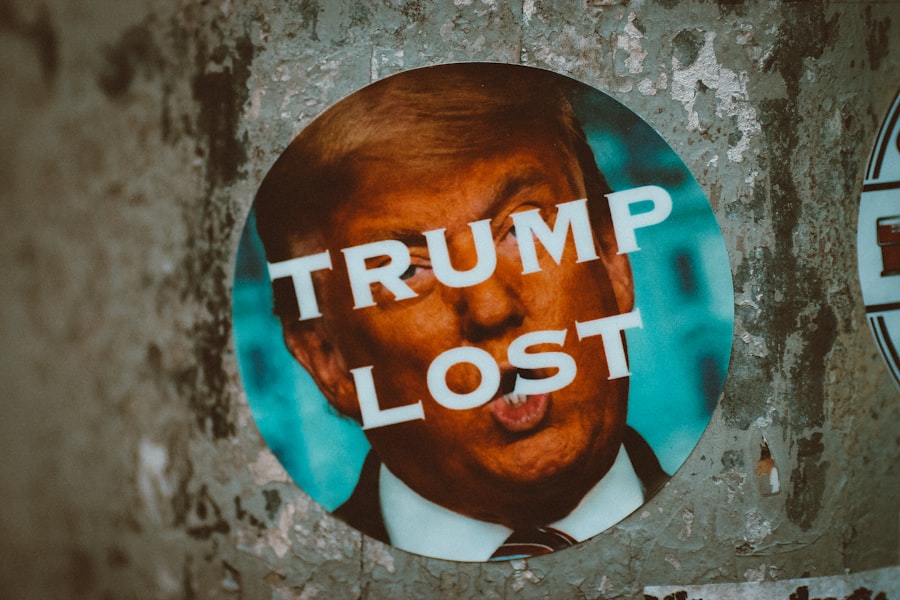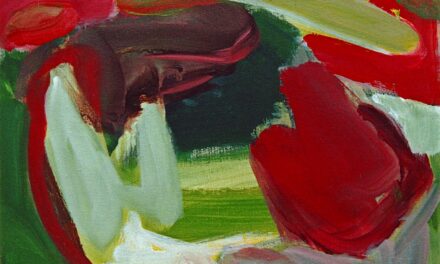Feminist art has a rich and complex history dating back to the late 1960s and early 1970s. It emerged as a response to the male-dominated art world and sought to challenge traditional gender roles and stereotypes through artistic expression. The feminist art movement was part of the larger women’s liberation movement, aiming to address the lack of representation of women in art history and the marginalisation of female artists.
Feminist artists endeavoured to create a space for women’s voices and experiences in the art world, using their work to explore issues such as gender inequality, reproductive rights and domestic labour. A significant moment in the history of feminist art was the establishment of the Feminist Art Program at the California Institute of the Arts in 1971. This programme, led by artists Judy Chicago and Miriam Schapiro, provided a platform for women to explore their creativity and develop a feminist approach to art-making.
The programme also produced the groundbreaking installation artwork “The Dinner Party,” which celebrated the achievements of women throughout history. This work, along with other feminist art projects, sparked important discussions about gender and power in the art world and beyond. The history of feminist art is characterised by a commitment to challenging patriarchal norms and advocating for gender equality through artistic expression.
Feminist art has evolved over the years, but its foundations in challenging gender inequality and amplifying women’s voices remain central to its identity. The movement has expanded to include artists from diverse backgrounds and experiences, and it continues to inspire new generations of artists to explore feminist themes in their work. The impact of feminist art has been profound, shaping the way we understand gender, power and representation in the art world and society at large.
Summary
- Feminist art has its roots in the 1960s and 1970s, when women artists began to challenge the male-dominated art world and explore gender and identity in their work.
- Key figures in feminist art include Judy Chicago, Cindy Sherman, and Barbara Kruger, who have used their art to address issues of gender, sexuality, and power.
- Themes and concepts in feminist art often revolve around the female experience, body politics, and the deconstruction of gender stereotypes and societal norms.
- The impact of feminist art on the art world has been significant, sparking important conversations about representation, equality, and diversity in the art community.
- Feminist art and intersectionality explores the interconnected nature of gender, race, class, and other social identities, highlighting the importance of addressing multiple forms of oppression.
Key Figures in Feminist Art
Challenging Gender Norms
One of the most influential figures in feminist art is Judy Chicago, whose work has played a pivotal role in challenging gender norms and advocating for women’s rights. Chicago is best known for her iconic installation artwork “The Dinner Party,” which celebrates the achievements of women throughout history.
Exposing Discrimination
Another key figure in feminist art is Guerrilla Girls, a collective of anonymous female artists who use guerrilla tactics to expose gender and racial discrimination in the art world. Through their provocative posters, billboards, and public interventions, Guerrilla Girls have brought attention to the lack of representation of women and artists of colour in museums and galleries.
Paving the Way for Future Generations
In addition to Chicago and Guerrilla Girls, other key figures in feminist art include Faith Ringgold, Cindy Sherman, and Barbara Kruger, all of whom have used their work to challenge stereotypes and advocate for women’s rights. These artists have played a crucial role in shaping the feminist art movement and have paved the way for future generations of artists to continue the fight for gender equality through their creative expression.
Themes and Concepts in Feminist Art

Feminist art explores a wide range of themes and concepts that are central to the feminist movement. One of the key themes in feminist art is the exploration of gender identity and representation. Artists use their work to challenge traditional notions of femininity and masculinity, as well as to interrogate the ways in which gender roles are constructed and enforced in society.
Through their art, feminist artists seek to disrupt these norms and create space for diverse expressions of gender identity. Another important theme in feminist art is the critique of patriarchy and power structures. Feminist artists often use their work to expose and challenge the ways in which patriarchal systems oppress and marginalise women.
They interrogate issues such as reproductive rights, domestic labour, and sexual violence, shedding light on the ways in which these issues are shaped by power imbalances. Additionally, feminist art often engages with the concept of intersectionality, which recognises that gender inequality is interconnected with other forms of oppression such as race, class, sexuality, and ability. Through their work, feminist artists seek to highlight these intersections and create a more inclusive understanding of gender equality that takes into account the diverse experiences of women.
Overall, feminist art is characterised by its commitment to challenging traditional gender norms, critiquing power structures, and advocating for a more inclusive and equitable society for all genders.
The Impact of Feminist Art on the Art World
Feminist art has had a profound impact on the art world, challenging traditional notions of gender, power, and representation. One of the key contributions of feminist art is its role in amplifying women’s voices and experiences in a male-dominated art world. Through their work, feminist artists have brought attention to the lack of representation of women in art history and have worked to create space for women’s artistic expression.
Feminist art has also played a crucial role in challenging patriarchal power structures within the art world. By critiquing issues such as sexual harassment, unequal pay, and lack of opportunities for women artists, feminist art has pushed for greater accountability and equity within artistic institutions. Furthermore, feminist art has expanded our understanding of gender identity and representation in art.
By challenging traditional notions of femininity and masculinity, feminist artists have opened up new possibilities for creative expression and have broadened our understanding of what it means to be a woman or non-binary person in society. Overall, the impact of feminist art on the art world has been far-reaching, shaping the way we understand gender, power, and representation in artistic practice and institutions.
Feminist Art and Intersectionality
Intersectionality is a central concept in feminist art that recognises that gender inequality is interconnected with other forms of oppression such as race, class, sexuality, and ability. Feminist artists have been at the forefront of highlighting these intersections and advocating for a more inclusive understanding of gender equality that takes into account the diverse experiences of women. Through their work, feminist artists seek to challenge not only gender inequality but also other forms of oppression that intersect with gender.
They aim to create a more nuanced understanding of power dynamics that takes into account the ways in which different forms of oppression intersect and compound each other. Furthermore, feminist art has played a crucial role in amplifying the voices of women from diverse backgrounds and experiences. By highlighting the intersections between gender and other forms of oppression, feminist artists have worked to create a more inclusive space for artistic expression that reflects the diversity of women’s experiences.
Overall, feminist art’s engagement with intersectionality has been instrumental in broadening our understanding of gender equality and advocating for a more inclusive and equitable society for all genders.
Challenges and Controversies in Feminist Art

The Ongoing Marginalisation of Women Artists
Despite significant strides made by feminist artists, women continue to be underrepresented in museums, galleries, and major art institutions. This lack of representation perpetuates unequal power dynamics within the art world and hinders the visibility and recognition of women’s artistic contributions.
Resistance to Change and Critique
Another challenge facing feminist art is the resistance it often encounters from those who are resistant to change within artistic institutions. Some critics argue that feminist art is too political or confrontational, leading to pushback from those who are uncomfortable with its critique of patriarchal power structures.
Censorship and Freedom of Expression
Furthermore, feminist art has also faced controversies around issues such as censorship and freedom of expression. Some works by feminist artists have been deemed too provocative or controversial by institutions or audiences, leading to censorship or backlash against the artists. Despite these challenges and controversies, feminist art continues to push boundaries and advocate for greater equity within the art world.
The Future of Feminist Art
The future of feminist art is bright as it continues to inspire new generations of artists to explore feminist themes in their work. As conversations around gender equality and representation continue to evolve, feminist art will play a crucial role in shaping our understanding of these issues. One exciting development in the future of feminist art is its increasing global reach.
Feminist artists from around the world are bringing attention to issues such as reproductive rights, LGBTQ+ rights, and racial justice through their work. This global perspective will enrich our understanding of feminism and create new opportunities for cross-cultural dialogue and collaboration. Additionally, as technology continues to shape artistic practice, feminist artists are exploring new mediums and platforms for their work.
From digital art to virtual reality experiences, feminist artists are pushing boundaries and reaching new audiences through innovative approaches to artistic expression. Overall, the future of feminist art holds great promise as it continues to challenge traditional gender norms, advocate for greater equity within artistic institutions, and amplify diverse voices from around the world.
If you are interested in learning more about the history of art, you may want to check out the article on prehistoric art. This article provides an introduction to the art created by early humans, exploring the different forms and techniques used during this time period. It is a fascinating look at the origins of artistic expression and how it has evolved over time. You can find the article here.
FAQs
What is feminist art?
Feminist art is a movement and form of art that emerged in the late 1960s and early 1970s, focusing on the promotion of women’s rights and equality through art. It addresses the social, political, and economic issues faced by women and aims to challenge and change the male-dominated art world.
What are the key themes in feminist art?
Key themes in feminist art include the representation of women’s bodies, the exploration of gender roles and stereotypes, the critique of patriarchal power structures, and the celebration of women’s experiences and perspectives. Feminist art often seeks to challenge traditional art forms and question the male gaze.
Who are some prominent feminist artists?
Prominent feminist artists include Judy Chicago, Cindy Sherman, Barbara Kruger, and Kara Walker, among others. These artists have made significant contributions to the feminist art movement through their innovative and thought-provoking works.
How has feminist art influenced the art world?
Feminist art has had a profound impact on the art world by challenging traditional notions of art and beauty, promoting inclusivity and diversity, and raising awareness about gender inequality and discrimination. It has inspired new generations of artists to explore feminist themes and perspectives in their work.
What are some common techniques used in feminist art?
Common techniques used in feminist art include collage, performance art, photography, and installation art. These techniques are often employed to convey powerful messages about gender, identity, and social issues. Feminist artists also frequently use their own bodies as a means of expression and resistance.




